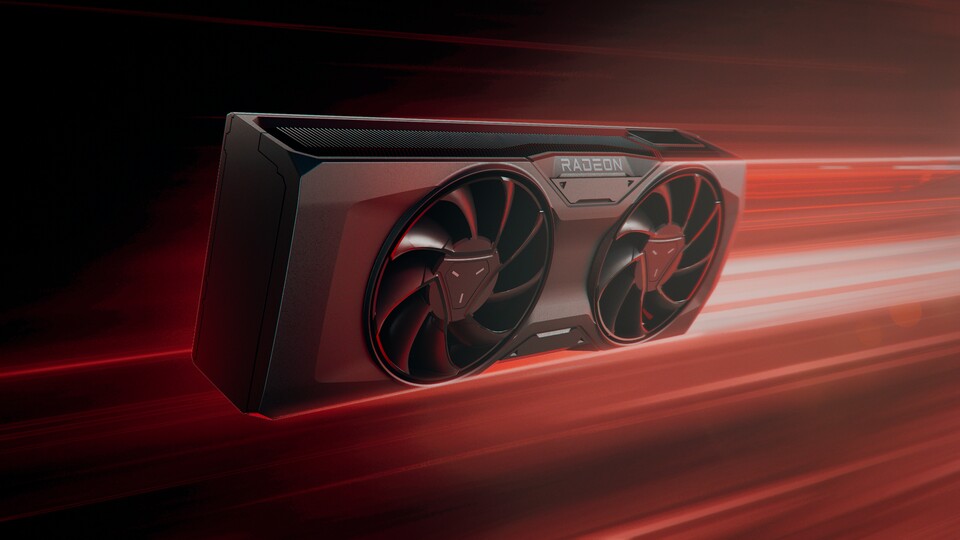
It seems to be confirmed: AMD's RX 8000 series will not attack the high-end segment. (Image source: AMD)
Advertisement
AMD will probably not target the high-end segment with its upcoming new generation of graphics cards and will leave the field to Nvidia. A leaker known in the scene has now confirmed this again.
Why it matters: If the rumors prove true, we won't see a fight for the performance crown among graphics cards for the first time in years. But that could also mean that AMD is concentrating primarily on the mid-range and really attacking there. That would be both good and bad news for players.
In detail: The hardware leaker Kepler responded to an indirect question from the community. Please don't tell me that AMD also uses GDDR6 in RNDA4
. The simple answer is: They do
:
Link to Twitter content
- The RX-8000 series is said to use GDDR6(X) instead of the faster GDDR7.
- GDDR7 is important to ensure smooth operation with high resolution and high frame rate on high-end graphics cards.
AMD's potential waiver allows for concrete conclusions
Specifically, it's about the graphics memory (GDDR6) built into the RX-8000 series.. Meanwhile, Nvidia is assuming that at least in the top models the new and theoretically twice as fast GDDR7 memory will be used (maximum 48.0 Gbps instead of the previous maximum of 24.0 Gbps).
A faster VRAM is important to ensure a stable high frame rate. If the memory is full or can't keep up with the textures, this can lead to frame drops.
In 4K resolution, textures consume a lot of storage space. At high frame rates, more data needs to be processed per unit of time. The memory must be able to provide this, which is why its speed plays an important role.
Conversely, abandoning the new memory standard indirectly indicates that AMD does not produce high-end graphics cards that rely on fast VRAM.
Why is this good and bad news for players?
The potentially bad news
Under no circumstances can it be good to leave the field and thus a monopoly position to one provider. This does not necessarily result in higher prices, but it cannot be ruled out that a high-end graphics card like the RTX 5090 will be even more expensive than the already not exactly cheap RTX 4090.
The Founders Edition of the RTX 4090 was initially priced at 1,949 euros. The flagship from Nvidia's own range currently costs 1,759 euros.
- A monopoly position leads to market power and can increase prices.
- The RTX 5090 may break through the 2,000 euro mark
Also important: As further rumors suggest, AMD will not even attack Nvidia's current top model RTX 4090 with the RX 8000 series. This in turn could mean that Team Green feels little pressure to significantly reduce the prices for this.
The potentially good news
AMD's abandonment of high-end graphics cards may mean that Team Red is fully attacking the middle and entry-level classes. The opposite effect on prices would then be conceivable here. As we all know, competition stimulates business and that is generally good for the consumer.
- AMD may be targeting the middle and entry-level classes more.
- This could lead to better prices in the corresponding segments, as Nvidia would then also be forced to adjust them.
When can we expect the new graphics cards?
Leaks and rumors currently assume that the new generations of graphics cards from AMD and Nvidia will appear at the end of this year. At least as far as the most powerful models are concerned. At Nvidia this could be the RTX 5090 and the RTX 5080.
From AMD's side, this could be a graphics card that is between the RX 7900 XTX and RX 7900 XT / RX 7900 GRE in terms of performance.